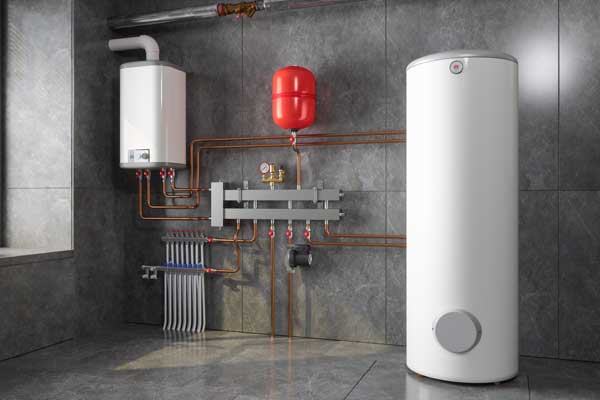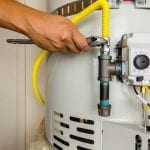Effective Techniques for Maintaining Your Home's Hot Water System
Effective Techniques for Maintaining Your Home's Hot Water System
Blog Article
Presented here in the next paragraphs you can get a lot of wonderful content with regards to How to Maintain a Hot Water Heater in a Few Simple Steps.

Warm water is necessary for daily comfort, whether it's for a rejuvenating shower or washing meals. To guarantee your warm water system runs efficiently and lasts longer, regular upkeep is vital. This write-up provides useful suggestions and insights on exactly how to preserve your home's warm water system to stay clear of disruptions and expensive repair services.
Intro
Maintaining your home's hot water system may appear daunting, but with a few easy actions, you can guarantee it runs smoothly for years ahead. This overview covers every little thing from recognizing your hot water system to DIY maintenance suggestions and understanding when to contact expert help.
Importance of Maintaining Your Warm Water System
Normal upkeep not just prolongs the life expectancy of your hot water system but also guarantees it runs effectively. Overlooking upkeep can bring about lowered effectiveness, greater power costs, and also early failing of the system.
Indicators Your Warm Water System Demands Upkeep
Recognizing when your warm water system requires interest can stop significant problems. Watch out for indications such as inconsistent water temperature, unusual noises from the heater, or rusty water.
Recognizing Your Warm Water System
Prior to diving into maintenance tasks, it's useful to understand the standard parts of your warm water system. Normally, this includes the water heater itself, pipes, anode poles, and temperature level controls.
Regular Monthly Maintenance Tasks
Regular month-to-month checks can aid capture small concerns prior to they intensify.
Flushing the Water Heater
Purging your hot water heater eliminates sediment build-up, boosting effectiveness and extending its life.
Checking and Changing Anode Rods
Anode rods prevent deterioration inside the storage tank. Examining and replacing them when broken is vital.
Examining and Adjusting Temperature Level Settings
Changing the temperature setups ensures optimum performance and security.
DIY Tips for Upkeep
You can perform a number of maintenance jobs on your own to keep your warm water system in top problem.
Looking for Leaks
Consistently examine pipelines and connections for leakages, as these can lead to water damages and greater expenses.
Examining Pressure Alleviation Valves
Examining the pressure safety valve ensures it works appropriately and avoids too much pressure accumulation.
Shielding Pipes
Protecting warm water pipes decreases warmth loss and can save energy.
When to Call an Expert
While do it yourself upkeep is valuable, some issues require professional competence.
Complicated Problems Requiring Expert Aid
Instances include major leakages, electric problems, or if your water heater is constantly underperforming.
Regular Expert Upkeep Perks
Specialist upkeep can consist of complete assessments, tune-ups, and making sure compliance with safety standards.
Verdict
Normal maintenance of your home's hot water system is essential for performance, long life, and expense savings. By adhering to these pointers and understanding when to seek specialist assistance, you can guarantee a reliable supply of warm water without unforeseen disruptions.
How to Maintain an Instant Hot Water Heater
Before tinkering with your hot water heater, make sure that it’s not powered on. You also have to turn off the main circuit breaker and shut off the main gas line to prevent accidents. Also turn off the water valves connected to your unit to prevent water from flowing into and out of the appliance. 2. When you’re done, you have to detach the purge valves’ caps. These look like the letter “T†and are situated on either side of the water valves. Doing so will release any pressure that has accumulated inside the valves while at the same time avoid hot water from shooting out and burning your skin. 3. When the purge valves’ caps are removed, you have to connect your hosing lines to the valves. Your unit should have come with three hoses but if it didn’t, you can purchase these things from any hardware or home repair shops. You can also get them from retail stores that sell water heating systems. Read the user’s manual and follow it to complete this task properly. When the hosing lines are connected, open the purge port’s valves. 4. You should never use harsh chemical cleaners or solutions when cleaning your unit. Make use of white vinegar instead. It should be undiluted and you’ll probably use about 2 gallons. 5. Now flush your water heater. This task should probably take about 40 minutes. We can’t give you specific directions for this because the procedure is carried out depending on the type, model and brand of your heater. With that being said, refer to the user’s manual. 6. When you’re done draining the unit, you have to turn off the purge port valves again. Remove the hosing lines that you earlier installed on each of the water valves. Put the valve caps (purge port) back in their respective places and be very careful so as not to damage the rubber discs that are found inside these caps. 7. Now that everything’s back in place, check your user’s manual again to find out how to reactivate your water heating system. 8. Once it is working, turn one of your hot water faucets on just to let air pass through the heater’s water supply pipes. Leave the tap on until water flows smoothly out of it. https://www.orrplumbing.com/blog/2014/september/how-to-maintain-an-instant-hot-water-heater/

We were introduced to that write-up about How to Maintain a Hot Water Heater in a Few Simple Steps from a good friend on a different web address. Enjoyed reading our article? Please share it. Help another person find it. We value reading our article about What Kind of Maintenance Do Water Heaters Need?.
Or Book Technician Here Report this page